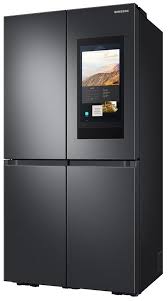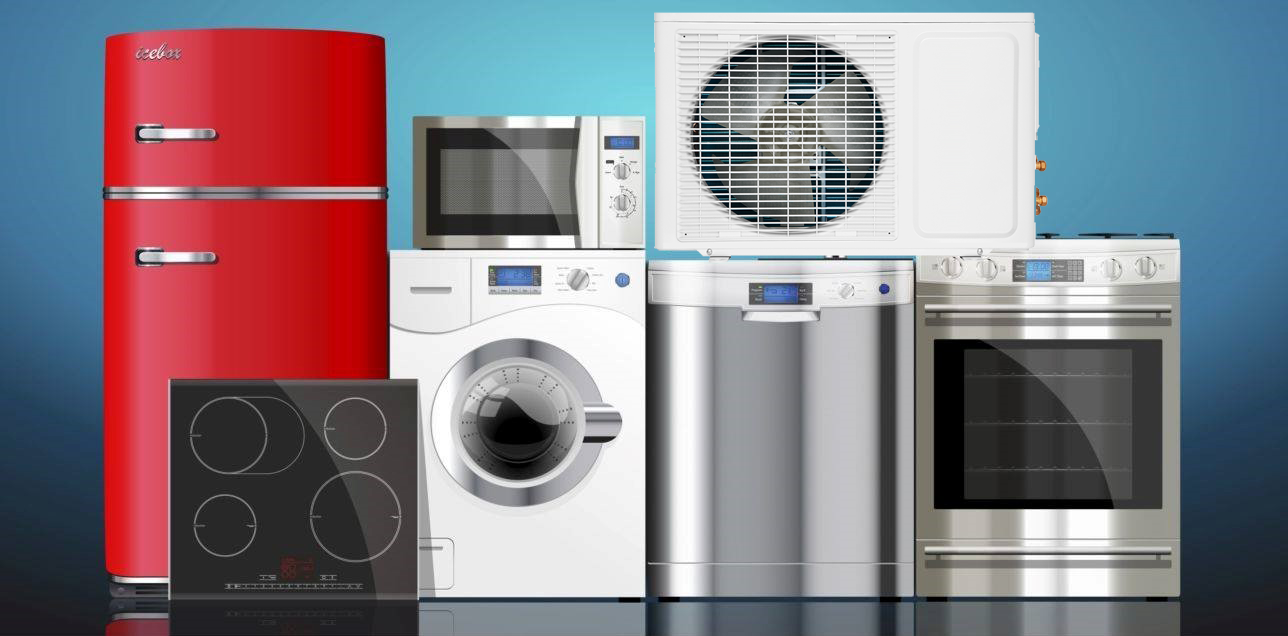All Appliances 0544496323 Call us any time.

Common Faults in Samsung Inverter Refrigerators:
- Compressor Not Starting or Failing Early
- The digital inverter compressor may not start properly or can fail prematurely due to power surges, internal faults, or faulty PCB (control board).
- PCB (Control Board) Malfunctions
- The main control board may fail, affecting the cooling function. This can cause the fridge or freezer to stop cooling entirely, or to overcool.
- Cooling Issues (Not Cooling or Uneven Cooling)
- Sometimes the fridge doesn’t cool properly due to a faulty compressor, clogged condenser coils, refrigerant leaks, or issues with temperature sensors.
- Fan Motor Failure
- The evaporator fan (which circulates cold air inside) may stop working, leading to poor cooling or ice build-up in the freezer.
- Ice Build-Up or Defrost Problems
- Samsung inverter fridges sometimes have defrost system issues. If the defrost heater or sensor fails, ice can build up on the coils and block airflow.
- Water Leakage
- Water may leak from the fridge due to a clogged or frozen defrost drain, especially in models with auto defrost.
- Noise Issues
- Some users report clicking, humming, or buzzing noises, which can be due to the compressor, fan, or ice maker.
- Display or Error Codes
- Error codes (like 22E, 33E, 88 88, etc.) can appear on the display, usually indicating issues with temperature sensors, fan motors, or communication between components.
- Door Seal Problems
- The rubber gasket on the door can wear out or not seal properly, causing the fridge to lose cold air and work harder.
- Power Supply Sensitivity
- These refrigerators are sometimes sensitive to voltage fluctuations, which can damage the inverter PCB or compressor
- 1. Compressor Not Starting or Failing Early
Possible Fixes:
Check Power Supply: Use a voltage stabilizer if your area has fluctuations.
Reset the Fridge: Unplug for 5–10 minutes, then plug back in.
Inspect Compressor: If there’s clicking but no cooling, the compressor may be faulty—needs technician replacement.
Check Inverter Board: A faulty control board may not send power to the compressor—replace the PCB if confirmed.
🔌 2. PCB (Control Board) Malfunctions
Possible Fixes:
Power Cycle: Unplug and wait, then reconnect to reset.
Look for Burn Marks or Odor: Burnt smell or black marks on the board = needs replacement.
Replace the Board: PCB boards are not repairable in most cases—order the correct part number and replace it (can be DIY if you’re comfortable).
🧊 3. Cooling Issues (Fridge or Freezer not cooling)
Possible Fixes:
Clean Condenser Coils: Dust on coils blocks heat release—vacuum or brush clean.
Check Evaporator Fan: If the fan doesn’t spin when fridge door is shut (use magnet to test), replace the fan motor.
Inspect Door Seals: Close the door on a piece of paper. If it slides out easily, replace the gasket.
Check for Ice Build-Up: If iced over, defrost the fridge manually (unplug for 24 hours).
🎛️ 4. Fan Motor Failure
Fix:
Access the Evaporator: Behind the back panel inside the freezer.
Listen for the Fan: If it’s silent and the fridge is warm, fan might be dead.
Replace Fan Motor: Use the model number to get a matching replacement fan.
❄️ 5. Ice Build-Up or Defrost Problems
Fixes:
Manual Defrost: Unplug the fridge for 24–48 hours to melt all ice.
Check Defrost Heater & Sensor: Use a multimeter to test—replace if broken.
Replace Defrost Sensor or Timer: Usually inexpensive and easy to swap.
💧 6. Water Leakage
Fixes:
Unclog the Drain Hole: Remove the back panel and clean the defrost drain hole with hot water or a pipe cleaner.
Check Drain Tray: Make sure it’s not cracked or misaligned.
🔊 7. Noise Issues
Fixes:
Buzzing: Could be ice hitting the fan—defrost the fridge.
Clicking: Compressor starting/stopping—check relay or overload protector.
Loud Fan: Replace noisy evaporator or condenser fan.
⚠️ 8. Display or Error Codes
Common fixes:
88 88 or 83E, 85E, 86E: Power or communication error – unplug and reset the fridge.
22E or 25E: Evaporator fan issue – check for blockages or replace the fan.
33E: Water valve issue – check connections or replace valve.
Look up error code in the manual for specific parts.
🚪 9. Door Seal Problems
Fix:
Warm Water Trick: Use warm water to soften the gasket and mold it back into shape.
Replace the Gasket: Easy to peel off and press a new one in—match your model number.
⚡ 10. Power Supply Sensitivity
Fixes:
Use a Voltage Stabilizer or Surge Protector.
Install a UPS (Uninterruptible Power Supply) if frequent outages are common.
🛠️ Quick Tips for DIY Repair:
Always unplug the fridge before working on it.
Label wires or take photos before unplugging connectors.
When in doubt, use YouTube tutorials specific to your Samsung model.
If the fridge is under warranty, contact Samsung support before attempting repairs.

